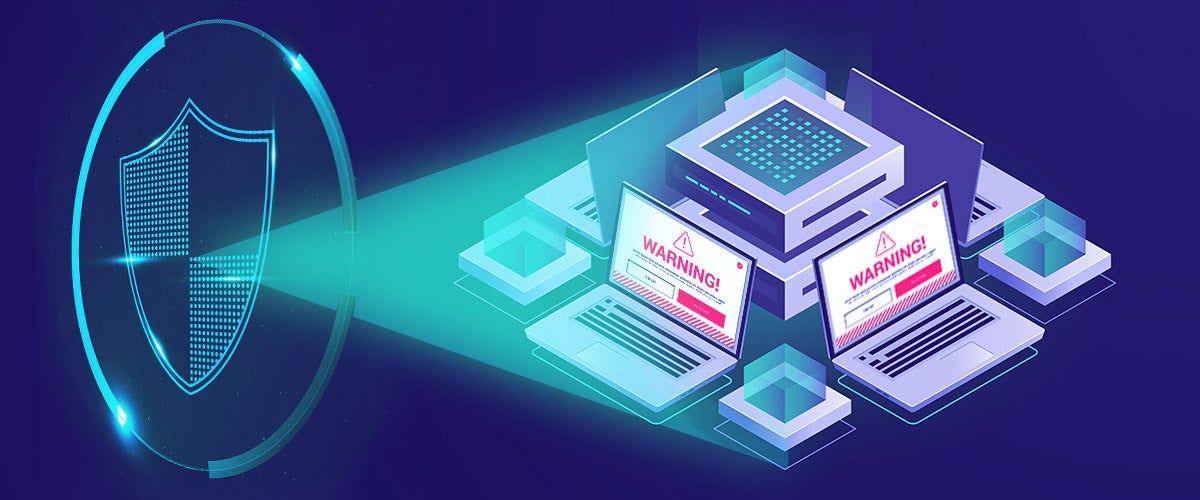
Content monitoring & filtering: how it works and which solutions you should choose
Content monitoring & filtering, hence monitoring digital contents and filtering undesired ones. How do these tools work? What characteristics should they have? We explain it all in this article.
1. What are content monitoring & filtering tools?
Content monitoring & filtering tools monitor in real time the activity of one or more digital devices – like computers, tablets or smartphones – looking for dangerous or undesired contents. As soon as one such content is detected, the tool blocks it and puts it in quarantine.
Content monitoring & filtering is a universal term that includes all of these types of applications. Actually, more and more often the word “monitoring” is left behind. The reason for this is quite simple: in order to filter digital contents, it is normal to also perform a monitoring.
Indeed, while the monitoring of contents during navigation and their filtering are still two different activities, the primary aim of monitoring is that of filtering dangerous contents. However, it is also true that the monitoring of contents transiting through a digital device could have another, different aim.
Within a company, at home or in school, individuals can have an interest in controlling the activity of an employee, a son or a student, without necessarily blocking it. Online navigation control within a company could have the target of measuring productivity, while in school the aim could be to monitor students’ digital activities in order to understand their level of attention.
Before illustrating the different types and functionalities of content monitoring & filtering tools, we need to clarify that these are way more powerful solutions compared to the content filters natively integrated in a service or application. Sky’s Parental Control, the content filter of Netflix or the Restricted Mode of YouTube block only some of the damaging contents on their respective platforms. On the other hand, the solutions that we will discuss supply a much wider protection.
>> FlashStart protects you from a wide range of threats and blocks access to malicious websites ? Request a quotation or try it now
2. Different types of content filtering solutions
The tools to monitor and filter contents are available in different forms. They can be softwares that you need to install on each single device (client-based) or they can act at the general level on the company network through a dedicated server (server-based).
Also, they can be softwares installed in the company gateway and in the home router (gateway-based) or integrated in the company firewall. Finally, they can also be a cloud-based service that connects directly to the resources of the supplier or of the Internet Service Provider.
The most widespread solutions in big and medium companies include Barracuda Web Security Gateway available on-premise with hardware and software in the form of a service, Cisco Umbrella, a cloud-based gateway, and FortiGuard, available both as a combined hardware and software solution and as a cloud-based service.
Whatever the type of choice, the content monitoring & filtering tool monitors and filters both Internet websites (using also DNS filtering techniques), and all sorts of contents coming from the web and from email services, including executable files.
The check can take place as soon as the content transits through the company gateway and hasn’t reached the device yet. Or, in the case of a client-based tool, the content analysis takes place directly on the device. These, for example, are the most suitable solutions for smartphones and tablets.
2.1 How do content monitoring & filtering tools work
The filtering criterion provides for a check of the content (links, texts and images) and a comparison to a range of pre-set models, hence a database that can also be personalized. If the content satisfies the filtering criteria, for example an image contains a very high percentage of “skin color”, then it is blocked, exactly as with Instagram, when a profile gets blocked because of a suspicious picture.
In case a company wants to proceed only with the monitoring of the employees’ activities, the tool will not block any contents but will send a warning message to the person responsible for control.
We said that the model to which the filter makes reference is pre-set, but it is also important for it to be personalizable. It is useful to contribute to the fine-tuning of the model through personalizations, especially for website filtering. In a company, for example, it could make sense to block access to specific websites, such as those to look for other jobs or the competitors’ ones, which the standard model cannot consider.
To choose of the most suitable solution, moreover, it is advisable to make sure that the database is constantly updated by the supplier and understand both the speed of updating and its security level, in order to avoid the so-called “false positives”.
To sum it up, a content monitoring & filtering tool is able to filter:
» Contents that are downloaded from the web
» Email messages and their attachments
» Executable programs
» Internet websites (porn, social networks, e-commerce, etc.)
» Strings on search engines.
Moreover, the most modern monitoring and filtering tools also exploit machine learning to improve their models, learning on-the-fly the behaviors of users. The use of Artificial Intelligence is one of the ways to avoid “false positives” and, especially, to intercept contents and websites that do not result dangerous when checked by the algorithms.
Furthermore, it should be underlined that filters are based on an ex-ante categorization. The FlashStart solution, for example, supplies personalizable lists with over 90 categories that are constantly updated.
Using categories means, for example, being able to block all the websites that belong to a specific category. Hence, the block applies to a hefty group of websites. For example, religious websites or those connected to fake news, online gaming, shopping and banking and not only the most visited porn sites.
>> FlashStart is the ideal cyber protection solution to satisfy all your needs ? Request a quotation or try it now
3. Reasons to use monitoring and filtering
The reasons that push individuals and companies to use a content monitoring and filtering tool are very diverse. Within a company, they include:
» Security. Checking emails allows the prevention of attacks based on social engineering, which often carry malware. Also blocking the download of suspicious files acts in the name of company security.
» Compliance. In many countries there are laws establishing a need to protect the navigation of minors. Schools, libraries and public places are obliged to safeguard Internet navigation with suitable instruments.
» Policy. Every company has a policy that needs to be respected by all the employees. In order to enhance productivity, for example, access to online gaming or social networks is blocked, as well as shopping websites and recruitment ones.
» Streaming. Binge watching on TV series in the office shall not be allowed. Not only because the office is the place where one should work, but especially because video streaming affects the performance of all the company network.
4. What to consider before purchasing
What are the features one should consider before purchasing a content monitoring & filtering tool? First of all, price. Not in absolute value but compared to the use one wants to make of it. Price depends on functionality, from quality to frequency of database updating, on top of the number of users that one needs to serve.
For a medium-to-large company a solution to be installed in the gateway could be advisable, or else a more complete protection platform, which includes also the monitoring and filtering of contents. In this case, the installation costs of the hardware and software need to be summed to those needed for their management and maintenance.
A solution at the company level must also be scalable. Hence, it must follow the growth of the client’s company in terms of resources. In order to grant this, it can be convenient to rely on a cloud-based solution compared to a system based on hardware appliances.
Flexibility is another feature to keep in mind. Every company has different needs, dimensions and policies, and this is why personalization features are fundamental. Among the parameters where one can act flexibly there is profile diversification, in order for the client company to diversify filters depending on the group to which a given user belongs. The classic case is about journalists: for their activity, journalists need to have access to websites with specific contents, while an administrative employee of the same publishing company would not be justified.
Personalizing also means adding new filters easily, for example depending on new company policies. It is also useful to have a scheduling of the filtering activity and to verify the compatibility of the tool to the IT infrastructure. Ease of use and configuration, on top of the generation of clear and dense reports, are the features to consider in the purchasing phase.
>> FlashStart has grown over the years thanks to its competence and trustworthiness ? Request a quotation or try it now
4.1 What to choose for the household or for an SME
Domestic networks are more and more considered on the same level as a small company. The number of devices that are constantly connected to the WiFi at home increases year after year and the risks involved are similar to those of a small office. In these contexts, like in a school or in a local public institution, it is advisable to rely on a software solution or a cloud service, which is economically feasible and easy to manage.
The cloud-based solution of content monitoring & filtering offered by FlashStart stands out for the frequency of database updating. Also it does not affect the speed of upload of websites and services and exploits machine learning to prevent users’ behaviors, on top of granting a competitive cost.
The possibility to create different web protection policies for different types of users is also particularly appreciated. For example, in a company we could filter in different ways the Internet navigation of directors and employees and in a school the same difference could apply to students and teachers. With FlashStart, moreover, the same filtering policies can be kept also for mobile devices in roaming for work or online learning, on smartphones and tablets.
Flashstart is a safe tool to navigate online both on-premise and remotely during smart working
Request a quotation or try it now
You can activate the FlashStart® Cloud protection on any sort of Router and Firewall to secure desktop and mobile devices and IoT devices on local networks.










